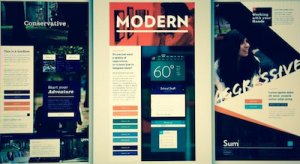Over the past few weeks, our partner Mighty has been working on putting together page strategy documents. These documents consist of two major parts: a strategic foundation and content recommendations.
The strategic foundation asks and concisely answers some important questions about why the page exists: What is the objective of the page and what are we trying to say? Who are the primary audiences and what do we want them to do? What resources do we have or will we need to pull this off?
The content recommendations identify and prioritize specific elements and types of content that will help us meet the page objective. How the various content types actually look and work has yet to be determined. Rather, the page strategy document helps guide the wireframing process and allows us to explore design solutions informed by the strategic inclusion and prioritization of specific content. It also provides a foundation for conversations about content creation for specific pages.



